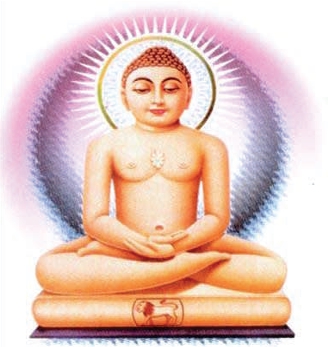
History and Doctrine of Sthanakvasi
1. History
In 1017 a movement of Shvetambara monks in the capital Saurashtra tried to break the power of the caityavasis, temple-dwelling monks, who governed the Jain community. This group, the vanavasi, forest-dwellers, partially succeeded by setting up their own community based more on traditional values.
But it was with Lonka, a mysterious figure who lived in Gujarat in the fifteenth century and whose date (between 1418 and 1425) and place of birth (Limbdi or Ahmedabad) are not certain, that effective rebellion against the caityavasis started in 1451. Original sacred texts were only available to monks but Lonka as a scribe gained access and was shocked at the difference between the discipline demanded in the texts and the lack of discipline of the powerful monks. Lonka saw the temple as the main source of corruption and its rituals as irrelevant to the path set out in the texts. His challenge to the caityavasis brought followers, including a very influential Jain minister, Lakhamsi. The apathetic Jain community was shaken and forced to look at itself in the light of the texts. Scholars such as Malvania claim that Lonka rejected image-worship because of Islamic influence, for the Muslims were destroying Jain temples at the time. There is evidence that image-worship was controversial from the early medieval period. Many Sthanakvasis claim that Lonka was initiated and died through sallekhana, religious death by fasting, but there is no evidence for either. Lucas suggests that the uncertainties about Lonka will be solved only by research in Sthanakvasi libraries.
After the death of Lonka, the Lonka Gaccha reverted to image-worship and members and monks broke away. A merchant named Lavaji left in about the third decade of the seventeenth century, wanting to revert to monastic life described in the Dashavaikalika, a Shvetambara text describing ascetic behaviour. Succeeding monks of this subsect sought lodgings in ruined and deserted buildings as the earliest texts advised, and were called Dhumdhiya, Searchers, as they looked for lodgings. Sthanakvasis, meaning 'Living in Lodging Houses' from sthanak, lodging house, evolved from the Dhumdhiya. They shunned the upashraya, ascetic lodging houses by the temples.
Lavaji introduced the permanent wearing of the muhpatti. Some Sthanakvasis link this with Lonka but there is no evidence. Early and medieval texts refer to wearing the muhpatti and Lavaji revived an ancient custom abandoned by a corrupt world.
The Sthanakvasis are the least studied sect of a little studied religion. One theory of the emergence of the sect is not to do with ascetic reform but with escape from high caste domination and is involved with lay business competition.
Dharmadasa became acarya of the sect in 1659 and had ninety-nine followers. On his death the Sthanakvasis split into twenty-two branches, a process which is historically obscure. The lineage of these branches became popularly named Baistola or Baisampradya (Bais meaning twenty-two), and in Gulabpura, Rajasthan, the Sthanakvasis call themselves Baispanthis, the 22 Community. In the nineteenth century a crisis involved the loss of important monks such as Buterayaji and his pupil Atmaramji to the Shvetambara image-worshippers.
The Sthanakvasis remain a strongly principled Jain sect. A recent attempt was made to unite their ascetic groups and acaryas, but this did not succeed because of a dispute whether microphones used at public meetings destroy organisms. Sushil Kumar Muni, a Sthanakvasi monk, has become well-known by intervening positively in communal disputes, and his ascetic group permit him to travel outside India to teach.
2. Doctrine
Lonka is regarded by the Sthanakvasis not as the founder of the sect but as the great precursor of Sthanakvasi Jain doctrine. He believed that worship of the Jina-image was against ahimsa, non-violence, because the quarrying and digging to make and set up the image harmed life. From these ideas Lonka stated publicly that temple worship was a mithyatva, a misdeed for any Jain, as such worship was not advocated in the ancient texts. Some writers suggest Muslim influence caused Lonka's rejection of image-worship. But from a strict doctrinal viewpoint Lonka was correct because image-worship is not an important theme in the texts and the texts state that life forms are destroyed in the construction of any building. Opposition to image-worship is still a basic Sthanakvasi doctrine and, as with Lonka, they claim it is part of a corrupt world.
The Sthanakvasis reject thirteen texts of the Shvetambara canon, accepting only thirty-two texts (as do the Terapanthis). Sthanakvasis and Terapanthis wear the muhpatti, mouth-shield, permanently. This is a strip of cloth across the mouth tied behind the ears which is square in shape for the Sthanakvasis and more narrow and elongated for the Terapanthis. Its purpose is to reduce to a minimum the killing of tiny insects and air-bodies through the inspiration and expiration of the breath. This is the outward expression of ahimsa. The doctrine of ahimsa is now being spread outside India by the Sthanakvasi monk, Sushil Kumar Muni.
3. Symbols
Sthanakvasis are exceptions to the general rule of abandoning the household name in the diksha, initiation, or pravrajya, renunciation, ceremony. They retain their household names even as ascetics - a practice which may have originally served to distinguish them from the Shvetambaras.
Worshippers go daily to the sthanak, hall, to make darshan, seeing, of the resident monks.
4. Adherents
Sthanakvasis in the past were mainly found in the north and west, in Punjab and Gujarat. But with increasing internal migration by the Sthanakvasi laity they are more widespread. Sthanakvasi ascetics can even spend caturmas, monsoon retreat, in South India.
5. Main Centre
Ludhiana, Punjab, and Limbdi, Gujarat.